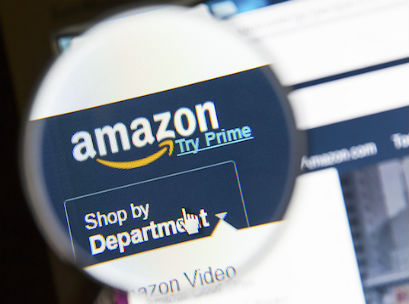 Increasing debt, cost of living pressures and the entrance of Amazon are emblematic of a worrying trend for traditional retailers, according to an business entrepreneur who works with the e-commerce giant .
Increasing debt, cost of living pressures and the entrance of Amazon are emblematic of a worrying trend for traditional retailers, according to an business entrepreneur who works with the e-commerce giant .
The most recent ABS statistics for January showed a marked decline in spending on clothes, shoes and department stores over what is a traditional sales period.
Speaking to Inside Retail, Adam Hudson – who operates a software business, an Amazon marketing service firm, a homewares brand that sells its products exclusively through Amazon into more than 30 countries around the world and an online education platform, none of which have outside investors – said on top of December’s retail figures, which showed a dip in bricks-and-mortar sales that there was evidence that consumers are less and less inclined to support the bloated infrastructure costs and hassle of the old retail model. Meanwhile a five year snap shot shows 100 per cent growth for online retailers.
“In regard to the two worst performing states, NSW and VIC, I personally believe that’s tied to the ever-increasing debt levels in those states and the year round cost of living there,” he said.
“People are maxing out what they can borrow in order to participate in what they believe will be a never ending property boom.
“Not surprisingly, I believe that traditional retailers with store fronts are going to continue to suffer as more money moves to more efficient business models.
“I am personally not optimistic about the medium term future of Australia’s economy, and I think business models that require consumers to pay for over-inflated rents and expensive and underutilised human capital are going to suffer.”
Hudson said the ABS figures are indicative of a much larger trend, rather than a cyclical issue.
“Customer engagement is one thing, but a business model that is being disrupted by far more efficient competitors is quite another,” he said. “I think the horse has bolted for most traditional retailers and that we are going to see more carnage in the Australian retail sector in 2017 and beyond”.
Bill Dudley, New York Federal Reserve Bank CEO recently pointed towards consumer’s borrowing and lending as being the largest influences on spending in the US. It’s an aspect that more Aussie retailers should consider, according to Hudson.
“I believe that personal debt should be of significant concern for brick and mortar retailers in Australia in particular,” said Hudson while pointing towards to OECD data where Australia ranks sixth in the world for household debt.
“The correlation between household debt and retail spending was apparent in the December retail figures as well, with NSW and VIC, the most expensive places to live, being the worst performers for retailers for the period.
“When consumers have less to spend, they naturally seek out the lowest prices possible, something the bloated brick and mortar retailer simply cannot compete on.
“Compound that with people’s increasing familiarity with shopping online and their lack of time, and you are looking at the perfect storm for traditional retail”.

Hudson said retail is in the midst of an Uber-like disruption to the industry and that Amazon’s entry will create a predicament for traditional retailers with slower and more expensive propositions with considerably less choice, no consumer review structures to rely on and hope that consumers are willing to still pay for their bloated rents and often idle staff.
“The tipping point in Australia will be the arrival of Amazon,” he said.
“With their fulfilment centres in place, Australian consumers will see hundreds of new brands that have never been offered from within Australian shores.
“If they become Prime members, as an estimated 60,000,000 US households have,, they will get free two-day shipping on most items, and prices will be significantly lower than anything they’ve seen before because of the warehouse to consumer model”.
“I think Australian retail is in for some enormous change, and that will have knock-on effects in the commercial real estate market as well”.
And while Gerry Harvey argues that he “will be competitive, come hell or high water”, Amazon is already light-years ahead of the competition, according to Hudson who believes that rather than trying to simply match Amazon’s prices, Australian retailers need to educate themselves and invest in technology and product differentiation in order to have a chance of competing with the disruptive world of online retail.
“It’s interesting that Gerry announced a $250 million profit and then implies that Amazon is incompetent because they aren’t profitable. Amazon is not profitable only because they have been doing what almost all Australian retailers should have been doing much earlier – investing into their future”.
Access exclusive analysis, locked news and reports with Inside Retail Weekly. Subscribe today and get our premium print publication delivered to your door every week.





